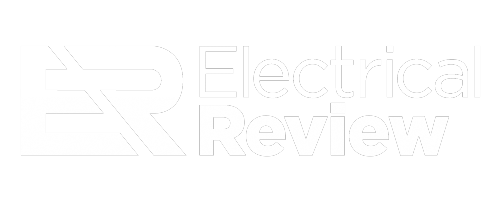Distributed or embedded generation is a hot topic at the moment. With more and more generation being connected those concerned with the stability of the network have to deal with increasing electrical power generation and distribution challenges.
The UK electricity supply network was originally designed to supply electricity in a one way system. Electricity was generated by a number of large power stations and delivered to the transmission grid for transportation over long distances to the distribution network, where the electricity was supplied to consumers locally.
While this is still the most common way of delivering electrical power, the increased use of distributed generation has changed the face of the distribution network. With encouragement from Government policies, feed in tariffs and the increase in renewable generation systems such as wind and solar, the electrical distribution network is increasingly becoming both a generation and distribution system.
While great financial and environmental benefits can be seen by generating power locally, it can also cause problems for the network. With multiple generation plants being connected to the network power is being fed back into it, reversing the usual power flows. This can cause problems with the components of the system, and can result in contributions to the electrical fault level, thermal ratings of equipment can be exceeded as could the capacity of the system.
Other issues relating to power quality can also occur, generation can contribute to the harmonic content of the supply, cause voltage unbalance and voltage fluctuation, resulting in load problems and flicker. Then there is the impact of the connection and synchronisation with the frequency of the network.
So if you want to connect anything but the smallest source of power to the supply network, you have to put suitable protection in place to ensure that, in the event of a fault, your connection won’t compromise the security of supplies to other consumers on the network.
The measures required when connecting generating installations rated at greater than 16 A to the supply network in the UK are detailed in two Engineering Recommendation documents issued by the Energy Networks Association: G59/2-1 and G59/3. At the time of writing, either document may be used but G59/2-1 is obsolescent and, from 1st December 2014, all new connections must comply with G59/3.
G59/3 stipulates the network protection and tests that need to be carried out on the protection relays, particularly under and over voltage, under and over frequency, stability tests and protection from loss of mains supply by step change of phase or rate of change of frequency (ROCOF).
Protection relay test sets are readily available to do some or all of these tests but they typically split into two categories: very simple instruments capable of performing limited tests with only single-phase testing, and very sophisticated 3 phase instruments, with provision for automatic testing of almost any type of relay.
Some single phase test sets are extremely versatile, such as the Sverker 780 which has the capability to test protection relay operation using variable voltage, current, and frequency outputs to test the relay tripping times and levels. The single phase sets tend to be relatively easy to use and have high power capabilities to be able to test the older high burden overcurrent relays, they cannot however test 3 phases simultaneously.
The sophisticated 3 phase test sets, in contrast, are easily capable of testing the latest relays but they are necessarily expensive and many users do not need the extensive range of options they offer. In addition, because of their sophistication, these high-end test sets have a relatively steep learning curve. Most G59 protection schemes require a test set with 3 phase capability.
It’s clear that there’s a need for an affordable three-phase relay test set that combines safety and versatility with ease of use. The best hardware in the world is of little value if it’s difficult to use, and this has been an all-to-common problem in the past with protection relay test systems.
To address this need, Megger has drawn on its extensive experience in the design and manufacture of protection relay test equipment to develop a “3 phase Sverker“, the innovative Sverker 900 test set, which has been conceived as an engineer’s “multifunction testbox” for protection testing. It features an intuitive user interface so that a PC is not required to operate the instrument.
It centres around a touchscreen that provides access to a wide range of pre-configured virtual test instruments, allowing the required test function to be selected quickly and easily. Full manual control and configuration are also supported and, in addition to the touchscreen, the instrument is provided with a large rotary knob that can be configured as required to control the current and voltage generators.
To make the Sverker 900 into a truly versatile “testbox”, additional tools are provided. These include an analogue ammeter and an analogue voltmeter, together with facilities for measuring a wide range of parameters such as phase angle; active, reactive and apparent power; power factor; resistance; reactance and frequency.
Other virtual instruments include a prefault-fault instrument, a ramping instrument and a sequence instrument. An impedance instrument is also provided, which allows relays to be tested directly from the impedance plane with conversion from impedance to voltages and currents carried out automatically by the test set. There is also a CT magnetisation instrument available. Test configurations and test results are stored in internal non-volatile memory and can be readily transferred to and from a PC via the instrument’s USB port.
In developing this innovative solution, key factors the designers took into account were the need for modern distribution relay protection schemes to be tested by three-phase secondary injection and also the requirement for test sets to provide high-power, high-amplitude outputs for use on high burden relays or when carrying out single-phase tests on current and voltage transformers.
The requirement for high-power single-phase test capabilities is addressed by making provision for connecting the three-phase current and voltage generators in series or parallel, as appropriate. This is by no means an unusual arrangement, but it is can involve a tangle of flexible connecting leads with plenty of scope for making wrong connections.
The Sverker 900 uses rigid links to make the necessary connections and the sockets for the links are positioned in such a way that it is physically impossible to make the wrong connections. These simple yet novel ideas allow convenience to be combined with safety and speed.
For the larger, more sophisticated protection schemes, instruments with facilities for automatic testing are often preferred. Once set up, this can speed up the testing time, increasing efficiency and reducing outage time.
To meet these needs, Megger offers test sets in its sophisticated SMRT range. The SMRT36 is probably the smallest and lightest instrument of its type, yet it delivers the high output power needed to test older electromechanical relays and, when used in conjunction with the STVI Smart Touch View Interface, it offers preset built-in test routines for most popular types of relay. If the SMRT36 is used with a computer running Megger’s AVTS software, fully automatic testing to G59/3 is supported.
Other models in the SMRT family offer functionality similar to that of the SMRT36, but feature a modular design that allows users to select the number of current and voltage channels to suit their own requirements. All SMRT test sets can optionally be equipped for testing in IEC 61850 networked substation environments.
There is little doubt that protection relay testing to G59/3 in the distribution network is increasingly becoming a mainstream activity for electrical engineers. Fortunately, Megger’s relay testing range is doing much to make relay testing more accessible both technically and financially with a variety of specification and testing capabilities.

